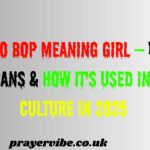If you’ve ever exclaimed “Good riddance!” When something annoying finally disappears from your life, you’re participating in a centuries-old tradition of expressing relief through language. 😤
This powerful phrase carries more weight and history than you might expect, making it one of the most emotionally charged expressions in English.
Whether you’re celebrating the end of a toxic relationship, finishing a difficult project, or simply getting rid of something that’s been bothering you, “good riddance” perfectly captures that sense of liberation and satisfaction. 🎉
🙏 Divine Prayer Generator
Select a prayer category to begin
Understanding “Good Riddance”

At its essence, “good riddance” is an emotional release valve – a way to express genuine relief when something unwanted finally exits your life. 😌 It’s the verbal equivalent of taking a deep breath after a stressful situation resolves, combining satisfaction with a touch of celebration.
This phrase serves as both a statement and an emotional declaration. When you say “good riddance,” you’re not just acknowledging that something is gone; you’re actively celebrating its departure and the peace it brings. 🕊️
Literal Definition
“Good riddance” literally means “I’m glad that person, thing, or situation is gone.” 💯 It’s a straightforward expression of relief and satisfaction when something troublesome is finally removed from your life. The phrase combines “good” (positive) with “riddance” (the act of getting rid of something), creating a powerful statement of liberation.
The beauty of this expression lies in its simplicity – two words that perfectly capture complex emotions of relief, satisfaction, and sometimes even triumph. 🏆 It’s particularly effective because it doesn’t require elaborate explanation; everyone understands the feeling it represents.
For example:
- “After months of dealing with that broken printer, it’s finally being replaced. Good riddance!” 🖨️
- “My toxic neighbor moved out last week. Good riddance to all that drama!” 🏠
- “I finally deleted that app that was wasting my time. Good riddance!” 📱
Common Contexts
You’ll typically hear “good riddance” in situations where someone or something has been causing ongoing problems or stress. 😅 It’s the phrase of choice when people want to express that a departure is not just acceptable, but actually celebrated.
Professional situations: When difficult colleagues leave, problematic clients end contracts, or challenging projects finally conclude. 💼
Personal relationships: After toxic friendships end, manipulative partners leave, or drama-filled social situations resolve. 💔➡️💚
Everyday annoyances: When broken appliances get replaced, annoying habits are broken, or persistent problems are finally solved. 🔧
Seasonal or temporary issues: Weather events ending, construction projects completing, or any temporary disruption concluding. 🌦️➡️☀️
The phrase works best when there’s a clear sense that the departed person or resolved situation was genuinely problematic or unwanted. 🎯
Tone & Emotion
The emotional range of “good riddance” is surprisingly complex, spanning from genuine relief to sharp sarcasm. 🎭 Your tone, facial expression, and context completely transform how the phrase is received and understood.
Sincere relief: When genuinely glad something difficult is over, the phrase carries warmth and satisfaction. 😊 “Good riddance to that stressful semester!”
Sarcastic dismissal: When used sarcastically, it becomes cutting and dismissive. 😏 “Oh, good riddance to our ‘wonderful’ manager…”
Frustrated celebration: Sometimes it combines frustration with relief, expressing both annoyance at past problems and joy at their resolution. 😤➡️😄
Bitter satisfaction: In some cases, it carries undertones of “you got what you deserved” or “it’s about time.” 💅
The key is matching your tone to your genuine feelings and considering how others might interpret your expression. 🤔
Origin of the Phrase “Good Riddance”
The journey of “good riddance” from medieval English to modern slang reveals fascinating insights into how language evolves and adapts to human emotions. 📚 Like many expressions that survive centuries, it fills a specific emotional need that transcends time periods.
Historical Background
The word “riddance” first appeared in English during the early 15th century, derived from the Middle English verb “ridden,” meaning “to clear away” or “to free from.” 📜 During this period, riddance was primarily used in neutral contexts, simply describing the act of removal without emotional connotation.
The transformation into “good riddance” occurred during the 16th century, when people began adding “good” to emphasize their satisfaction with whatever was being removed. 🎯 This evolution reflects humanity’s natural tendency to celebrate the resolution of problems and the removal of obstacles.
Initially, the phrase appeared mainly in written correspondence and formal documents. 📝 People used it to express relief about resolved legal matters, completed obligations, or departed troublesome individuals. Over time, it gradually moved into everyday speech, becoming more casual and emotionally charged.
By the 17th and 18th centuries, “good riddance” had become a common expression in both British and American English, though regional variations in tone and usage began to emerge. 🌍
Etymology of “Riddance”
The linguistic roots of “riddance” trace back to Old English “hreddan,” meaning “to save” or “to deliver.” 🛡️ This connection to salvation and deliverance explains why “good riddance” carries such strong emotional weight – it’s literally about being saved or delivered from something unwanted.
The transformation process: Old English “hreddan” → Middle English “ridden” → Modern English “rid” → “riddance” (noun form). 🔄
This etymological journey shows how the concept of removal and relief has been central to human experience for over a millennium. The fact that we developed specific words for “getting rid of things” and “being glad about it” demonstrates the universal nature of these feelings. 🌟
The prefix “good” intensifies the meaning, transforming a neutral description of removal into an active celebration of liberation. 🎉
Famous Early Examples
While pinpointing the exact first usage is challenging, several notable early examples help trace the phrase’s development. 🔍 Shakespeare, though not using the exact phrase, captured similar sentiments in various works, particularly in “The Tempest” where characters express joy at being freed from troublesome situations.
Early 18th-century literature contains numerous examples of “good riddance” in personal letters and published works. 📖 Writers like Daniel Defoe and Jonathan Swift used variations of the phrase to express relief about resolved conflicts or departed adversaries.
Colonial American documents from the 1700s show the phrase being used to describe relief about ended trade disputes, resolved land conflicts, and departed difficult neighbors. 🏘️ This demonstrates how the expression quickly adapted to New World contexts and concerns.
By the 19th century, “good riddance” had become so common that it appeared in dictionaries and phrase books, marking its transition from colloquial expression to officially recognized language. 📚
How to Use “Good Riddance” in Conversation?
Mastering the art of using “good riddance” effectively requires understanding context, audience, and timing. 🎯 Like any emotionally charged expression, it can enhance your communication when used appropriately or create awkwardness when misapplied.
Casual vs. Formal Contexts
“Good riddance” thrives in casual, informal settings where emotional expression is welcomed and understood. 😄 It’s the perfect phrase for conversations with friends, family, or close colleagues who appreciate honest, unfiltered reactions.
Casual settings where it works well:
- Friend groups discussing relationship drama 👥
- Family conversations about resolved problems 🏠
- Informal workplace chats with trusted colleagues 💼
- Social media posts celebrating life improvements 📱
Formal settings where alternatives are better:
- Professional meetings or presentations 🤝
- Academic or educational discussions 🎓
- Customer service interactions 💬
- Legal or medical consultations ⚖️
In formal contexts, consider alternatives like “I’m relieved that’s resolved,” “We’re glad to move forward,” or “It’s good to have that behind us.” 💡
Examples of Usage
Personal relationships: “After dealing with her constant negativity for months, I’m done with that friendship. Good riddance!” 💔
Work situations: “That outdated software finally got replaced. Good riddance to all those crashes!” 💻
Home improvements: “We finally got rid of that ugly wallpaper. Good riddance to the 1980s!” 🏠
Health and habits: “I quit smoking last month. Good riddance to that expensive habit!” 🚭
Seasonal changes: “Winter’s finally over. Good riddance to snow and cold!” ❄️➡️🌸
Technology upgrades: “My old phone died, but I got a new one. Good riddance to that slow processor!” 📱
Each example demonstrates how the phrase works best when there’s a clear problem that’s been resolved and genuine relief about the resolution. ✅
Tone Considerations
Your tone of voice can completely change how “good riddance” is received and interpreted. 🎭 The same words can sound celebratory, bitter, sarcastic, or genuinely relieved depending on your delivery.
Celebratory tone: Upbeat and energetic, expressing genuine joy about positive change. 🎉 “Good riddance to those student loans!”
Relief tone: Calmer and more measured, showing satisfaction with problem resolution. 😌 “Good riddance to that stressful situation.”
Sarcastic tone: Sharp and cutting, often implying criticism or dismissal. 😏 “Oh, good riddance to our ‘helpful’ neighbor…”
Bitter tone: Harsh and resentful, expressing anger about past problems. 😠 “Good riddance to that place!”
Consider your audience and relationship when choosing your tone. Close friends might appreciate sarcasm, while acquaintances might prefer sincere relief. 🤔

Common Variations of “Good Riddance”
Language naturally evolves and creates variations of popular expressions, and “good riddance” has spawned numerous alternatives and modifications. 🔄 These variations allow speakers to express similar sentiments while adding personal flair or adjusting intensity.
Similar Phrases
“Don’t let the door hit you on the way out” – More dismissive and rude, often used when someone unwanted is leaving. 🚪 This phrase adds humor while emphasizing that the departure is welcomed.
“Goodbye and good riddance” – Combines formal farewell with emotional relief, creating extra emphasis. 👋 Perfect for situations where you want to be clear about your feelings.
“I’m glad that’s over” – Neutral and safe alternative for professional settings. ✅ Expresses relief without potential negative connotations.
“It’s about time” – Emphasizes that the resolution was overdue. ⏰ Works well when something should have ended much earlier.
“Finally!” – Simple exclamation expressing relief and satisfaction. 🙌 More casual and universally understood.
“Thank goodness that’s finished” – Polite way to express relief in mixed company. 🙏 Appropriate for situations requiring diplomacy.
Regional Differences
While “good riddance” is widely understood across English-speaking countries, regional variations in usage and tone exist. 🌍 These differences reflect local communication styles and cultural attitudes toward conflict and resolution.
American English: Tends to be more direct and emphatic, often used with stronger emotional expression. 🇺🇸 Americans might say it more readily in casual conversation.
British English: Often delivered with more subtlety and potential for dry humor. 🇬🇧 British speakers might use it more sarcastically or understatedly.
Australian English: May be combined with other colloquialisms for extra emphasis. 🇦🇺 “Good riddance to that drongo!”
Canadian English: Typically softer in delivery, reflecting cultural preferences for politeness. 🇨🇦 Might be preceded by “sorry, but…”
Regional slang and local expressions often get combined with “good riddance” to create unique variations that reflect local communication styles. 🗣️
Misconceptions & Clarifications
Despite its apparent simplicity, “good riddance” is often misunderstood or misused, leading to communication problems and social awkwardness. 🤷♀️ Understanding these common mistakes helps ensure your usage is effective and appropriate.
Overuse
Using “good riddance” too frequently can make you appear negative, harsh, or difficult to please. 😬 It’s a powerful phrase that loses impact when overused and might give others the impression that you’re constantly dissatisfied or looking for problems.
Signs of overuse:
- Saying it about minor inconveniences 🤏
- Using it in every situation where something changes 🔄
- Applying it to people who haven’t actually caused problems 😕
- Making it your default response to any departure 🚶♀️
Better approach: Reserve “good riddance” for situations where you genuinely feel relief about something problematic being resolved. 🎯
When Not to Use It
Tragic situations: Never use “good riddance” when someone has died, been seriously injured, or experienced genuine tragedy. 💔 It’s inappropriate and hurtful.
Forced departures: Avoid using it when people have been fired, forced to move, or pushed out unfairly. 😞 Even if you didn’t like them, show basic human compassion.
Professional settings: Generally avoid it in workplace situations where professionalism is required. 💼 Use more neutral alternatives.
When you’re unsure about others’ feelings: If you don’t know how others feel about the situation, don’t assume they share your relief. 🤔
The Line Between Sarcasm and Sincerity
Understanding when “good riddance” is sarcastic versus sincere is crucial for both speakers and listeners. 🎭 Misinterpreting the intent can lead to misunderstandings and hurt feelings.
Sincere indicators:
- Genuine relief in voice and body language 😌
- Preceded by explanation of actual problems 📝
- Followed by discussion of improvements 📈
- Consistent with speaker’s usual communication style 💬
Sarcastic indicators:
- Exaggerated tone or facial expressions 😏
- Used immediately after praising someone 🙄
- Accompanied by eye-rolling or dismissive gestures 🙈
- Contradicts the speaker’s apparent feelings 🤨
When in doubt, consider the context and your relationship with the speaker. 🤝
The Phrase in Popular Culture
“Good riddance” has transcended everyday conversation to become a significant element in popular culture, appearing in music, literature, film, and digital media. 🎬 Its cultural impact demonstrates how simple phrases can capture universal human experiences and emotions.
Literature and Music
The most famous cultural reference is Green Day’s song “Good Riddance (Time of Your Life)” from 1997. 🎵 Interestingly, despite the title, the song is actually nostalgic and reflective rather than dismissive, showing how the phrase can be recontextualized artistically.
Other notable musical references:
- Various punk and rock songs use “good riddance” to express rebellion and liberation 🎸
- Country music often employs it in breakup songs and songs about leaving small towns 🤠
- Hip-hop artists use it to celebrate overcoming obstacles and leaving negative situations behind 🎤
Literature examples:
- Modern novels frequently use the phrase in dialogue to show character relief or dismissal 📚
- Poetry sometimes employs it for dramatic effect in pieces about change and liberation 📝
- Plays and screenplays use it to punctuate character departures or plot resolutions 🎭
Impact on Language
“Good riddance” has influenced how we express relief and satisfaction in English, spawning numerous variations and inspiring similar constructions in other languages. 🌍 Its success demonstrates the power of combining simple words to create emotionally resonant expressions.
Linguistic influence:
- Inspired similar phrases in other languages 🗣️
- Influenced the development of other “good + noun” constructions 📖
- Became a model for expressing complex emotions simply 💡
- Contributed to the evolution of dismissive language 🔄
Digital age adaptation:
- Frequently used in social media posts and memes 📱
- Adapted for text messaging and online communication 💬
- Incorporated into hashtags and viral content 📈
- Used in online gaming and digital communities 🎮
The phrase’s enduring popularity in digital communication shows its continued relevance in modern expression. ✨
Conclusion
“Good riddance” represents more than just two words – it’s a linguistic time capsule that captures centuries of human experience with conflict, resolution, and relief. From its medieval origins to its modern digital usage, this phrase has adapted and evolved while maintaining its essential function: expressing joy about unwanted departures.
Understanding the depth behind “good riddance” transforms it from a simple exclamation into a powerful communication tool. Whether you’re using it sincerely to celebrate genuine relief, sarcastically to make a point, or playfully to add humor to conversation, knowing its history and proper usage enhances your ability to connect with others through shared emotional experience.

Daniel Miller is a passionate writer, SEO expert, and blogger, specializing in Bible verses, prayers, and faith-based content at PrayerVibe.







